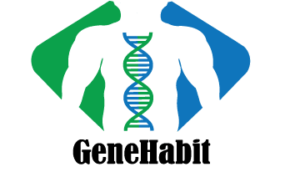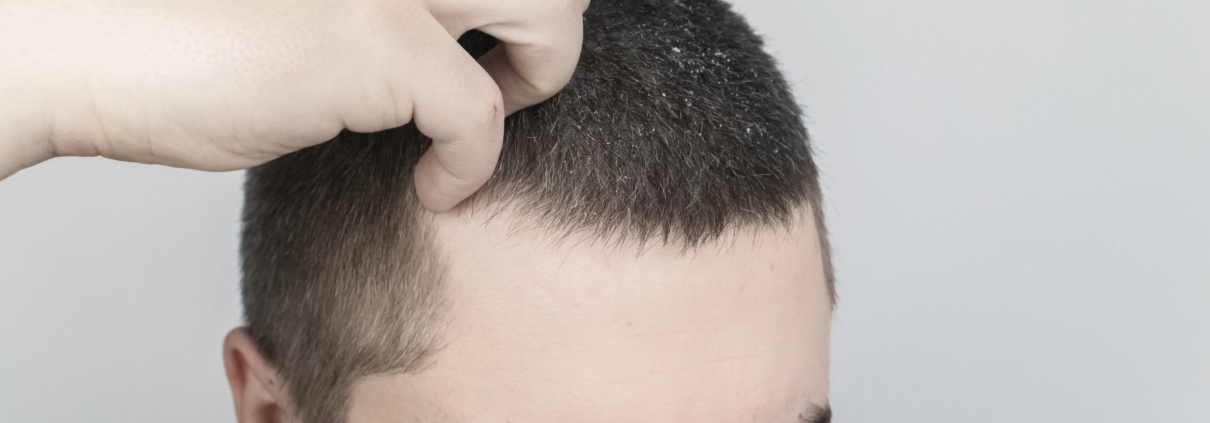Minoxidil Itchy Scalp Relief: Effective Treatment – GeneHabit
Causes Of Itchy Scalp
Before we get into the details of Minoxidil, let’s find out the causes of itchy scalp and hair loss. There are a few common reasons:
Dry Scalp: If your head isn’t moist enough, it can get dry and flaky, making it super itchy. Scratching can make it worse, though.
Dandruff or Seborrheic Dermatitis: These are conditions where dead skin flakes gather on your scalp, causing itchiness. Dandruff is common, and seborrheic dermatitis is more severe, with redness and inflammation.
Allergies: Some hair products or things in the environment can irritate your scalp through allergic reactions. Your head might not like shampoos, conditioners, or styling ingredients. Also, things like pollen or dust mites in the air can trigger itchiness for some people.
The Connection Between an Itchy Scalp and Hair Loss
Did you know that an itchy scalp can actually make you lose hair? It’s true! When your scalp is always itchy and inflamed, it messes with your hair’s growth. That can lead to hair getting thinner or even falling out. Often, a dry scalp accompanies the itching sensation contributing to hair loss issues. Effective dry scalp and hair loss treatments reduce dandruff and fungal infections.
Dry itchy scalp hair loss needs specific treatments for relief and prevention. See, when your scalp is all itchy and upset, it messes with the hair follicles. Those are the tiny factories that make hair. The inflammation can mess up the hair’s normal growth cycle, so it gets thinner or falls out. That’s not good.
But guess what? Minoxidil can help with both of these problems at the same time! Talking to a doctor can help you find the best dry scalp and hair loss treatment.
Meet Minoxidil
So, what’s this Minoxidil stuff, anyway? Well, it’s a hair loss treatment that usually helps hair grow. It has different formulations such as minoxidil solution, minoxidil rogaine, etc. It was first made to treat high blood pressure, but they noticed it also makes hair grow! Now, people use it a lot for hair loss and itchy scalps.
Let’s find out how it works!
What Is Minoxidil?
Minoxidil relaxes blood vessels and stimulate hair growth. When you use it, it opens up the blood vessels, making blood flow better to your hair factories (the follicles). That helps hair grow. When you put minoxidil foam on your scalp, it goes into your skin and reaches the hair factories. It tells the hair factories to relax their muscles and open up the blood vessels. That makes more oxygen, food, and other important stuff get to the hair factories. With better blood flow, the hair factories get what they need to grow strong and healthy hair. It’s like giving your hair factories a spa day!
How Does Minoxidil Work for Itchy Scalp?
Minoxidil does more than just help hair grow. It also makes sure the hair doesn’t fall out too soon. Here’s how it does it:
It turns “baby” hairs into “grown-up” hairs. You know those tiny, colorless hairs you sometimes see on your head? Those are “baby” hairs. Minoxidil tells them, “Hey, grow up!” So, they become thicker, colored “grown-up” hairs.
Minoxidil keeps hair in the growth stage for longer. This stage is called the “anagen phase.” By making it last longer, Minoxidil helps your hair stay on your head instead of falling out early. This means you get to keep your hair for longer!
Now that you know how Minoxidil works, you can appreciate how cool it is. Whether you’re dealing with hair loss or an itchy head, Minoxidil can help.
Minoxidil doesn’t just help your hair grow; it also makes your itchy scalp feel better. Here’s how:
Minoxidil’s Effect on Scalp Health
Minoxidil boosts increased blood flow to your scalp, making the hair factories happy. This can reduce inflammation and itchiness. It also helps your scalp stay balanced, so it doesn’t get too dry or flaky.
When your scalp itches, it can be super annoying, right? You might scratch it a lot, but that’s not good. Scratching can hurt your scalp and mess up your hair factories. Minoxidil to the rescue! It gets more blood flowing to your scalp, bringing in oxygen and important stuff. This helps your hair factories grow hair and be healthy.
Minoxidil is also great at reducing inflammation. Inflammation happens when your scalp gets all red and irritated. It can be because of allergies, fungal infections, or too much oil on your head. Minoxidil can help calm all that down, so your itchiness goes away.
Minoxidil and Itch Relief
The Minoxidil in the bottle is soothing, so it makes your scalp stop itching. It calms the nerves and makes you not want to scratch so much. It’s like a comfy blanket for your head!
An itchy scalp can be from all sorts of stuff, like skin irritant, dryness, allergies, or even skin conditions like psoriasis or eczema. Minoxidil can help with all these itchiness problems. It’s like a superhero for your head!
Also, Minoxidil doesn’t just stop itchiness; it makes your scalp healthier overall. When your scalp is happy, it helps your hair grow stronger.
And guess what? Lots of studies and happy people say that Minoxidil really works for itch relief. So, if your head is always itching, Minoxidil might be your new best friend!
How to Use Minoxidil for Itchy Scalp
Now that you know how awesome Minoxidil is, let’s talk about how to use it as the solution for an itchy scalp:
Getting Ready for Minoxidil
Before you put on Minoxidil, make sure your scalp is clean and dry. Wash your hair with a gentle shampoo and pat it dry with a towel. This gets rid of extra oil and stuff, so the Minoxidil can work better.
Step-by-Step Guide to Using Minoxidil for an itchy scalp
1. Part your hair: Split your hair into sections so you can put the Minoxidil everywhere.
2. Put on the Minoxidil: Use the applicator that comes with it to put the Minoxidil right on your scalp. Gently massage it in so it spreads all over.
3. Let it dry: Wait for the Minoxidil to dry by itself. Don’t use a hairdryer or touch your head until it’s dry.
4. Wash your hands: After using Minoxidil, wash your hands really well. You don’t want it to get in your eyes or other sensitive places!
Itchy Scalp from Minoxidil and other Side Effects
Like any medicine, Minoxidil can have side effects. But don’t worry, they’re usually not a big deal. Common side effects are:
– Dry or irritated scalp
– Hair shedding (don’t panic, this is temporary)
– Itching or redness where you put the Minoxidil
If you get something more serious, like chest pain, dizziness, or trouble breathing, get help right away. This kind of stuff is rare, but you shouldn’t ignore it.
How to Deal with an Itchy Scalp from Minoxidil
Sometimes, even though Minoxidil is great for stopping itchiness, it might make your scalp itch a bit at first. Don’t worry; it’s normal. It’s like your head getting used to a new friend.
If you get an itchy scalp from Minoxidil, here’s what to do:
Don’t Stop Using It: Even if your scalp gets itchy, keep using Minoxidil as your doctor told you. It’s just your scalp adjusting to the medicine.
Use a Gentle Shampoo: Wash your hair with a mild shampoo to help with the itching.
Topical steroids: It may calm your scalp itchiness.
Talk to Your Doctor: If the itchiness doesn’t get better or gets worse, talk to your doctor. They can help you find ways to make it better.
Conclusion
In conclusion, an itchy scalp and hair loss, often arise from conditions like dandruff, psoriasis, or stress. Persistent scratching due to itchiness might harm hair follicles and hair loss. Not all instances of an itchy scalp and hair loss are related. Diagnosis and treatment can prevent potential damage to both the itchy scalp and hair loss. By knowing what causes an itchy scalp, following the rules for using Minoxidil, and handling any itchiness from the treatment, you can get rid of this annoying problem. You can also go for other medicated shampoos such as zinc pyrithione, and propylene glycol. Just remember to use it regularly, and watch your scalp and hair get better!
In addition, with an advanced hair loss DNA test, you can know the efficiency of minoxidil treatment for yourself and if you have a risk of genetic hair loss.
Interested in a Personalized Approach to Your Hair Health?
Discover how your genetics influence your hair with the GeneHabit Hair DNA Test. Tailor your hair care routine based on your unique DNA profile for the best results. Visit GeneHabit’s Hair DNA Test to learn more and start your journey towards optimized hair health today!
Check Out Our Frequently Asked Questions
1. Why does Minoxidil cause an itchy scalp?
Minoxidil can cause an itchy scalp due to its alcohol content, which may dry out the skin, leading to irritation.
2. What are effective treatments for Minoxidil itchy scalp?
Effective itchy scalp treatment often involves using soothing shampoos with tea tree oil or medicated options containing ingredients like ketoconazole.
3. Which is more effective treatment for Itchy Scalp and Hair Loss, oral or topical Minoxidil?
Treatments include using gentle, hydrating scalp products, avoiding harsh chemicals, and possibly switching to a foam-based Minoxidil.
4. Are there natural remedies for soothing an itchy scalp caused by Minoxidil?
Yes, natural remedies like aloe vera, tea tree oil, and coconut oil can help soothe the scalp.
5. Can an itchy scalp and hair loss be a sign of a severe condition?
In some cases, an itchy scalp might be a symptom of an underlying scalp condition contributing to hair loss.
6. Does itchy scalp means hair growth?
Itchy scalp isn’t a direct sign of hair growth, but resolving scalp issues can create a better environment for healthy hair growth.
Book a consultation
Simply fill in your details in the form below and we’ll get in touch with you shortly.





